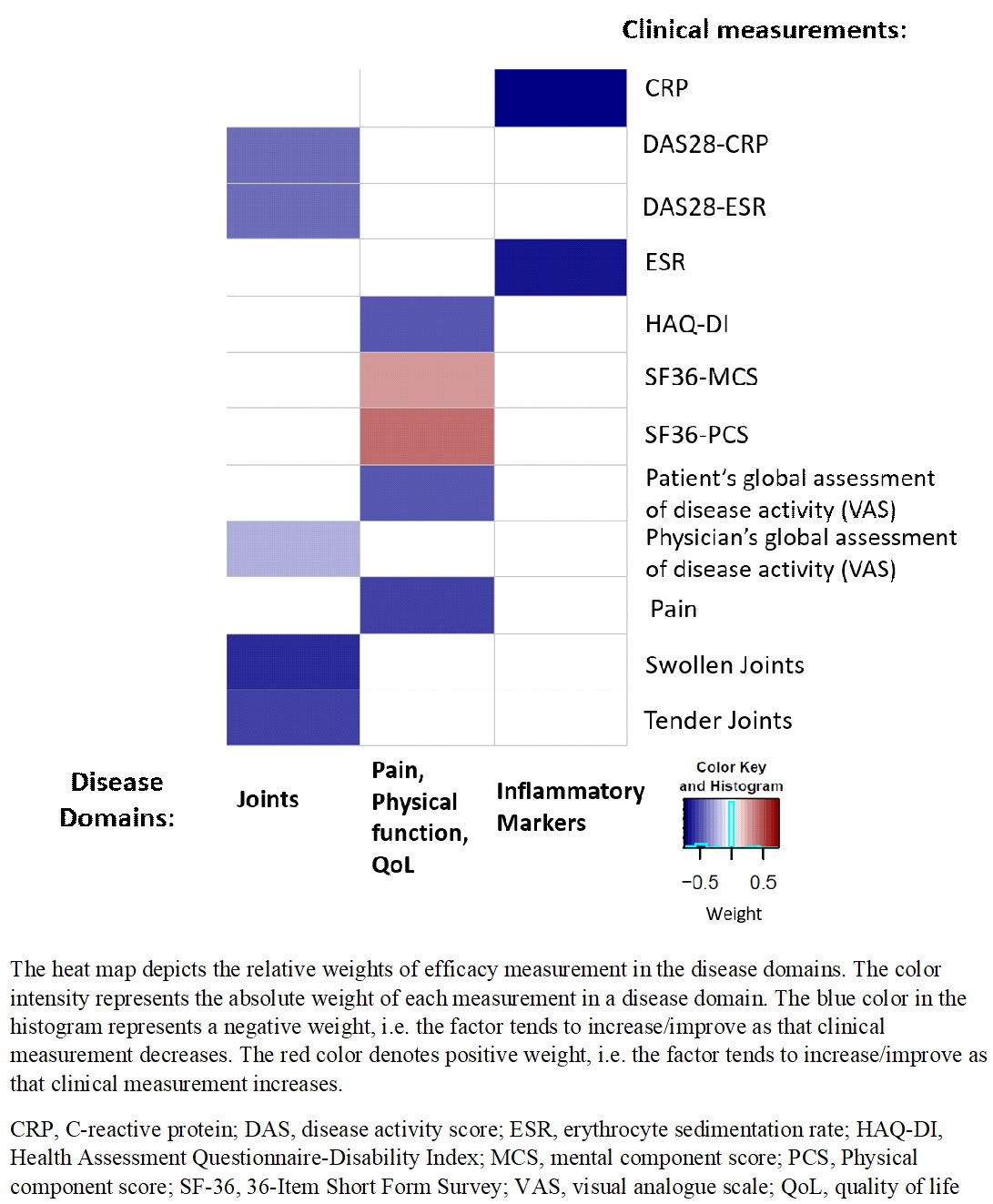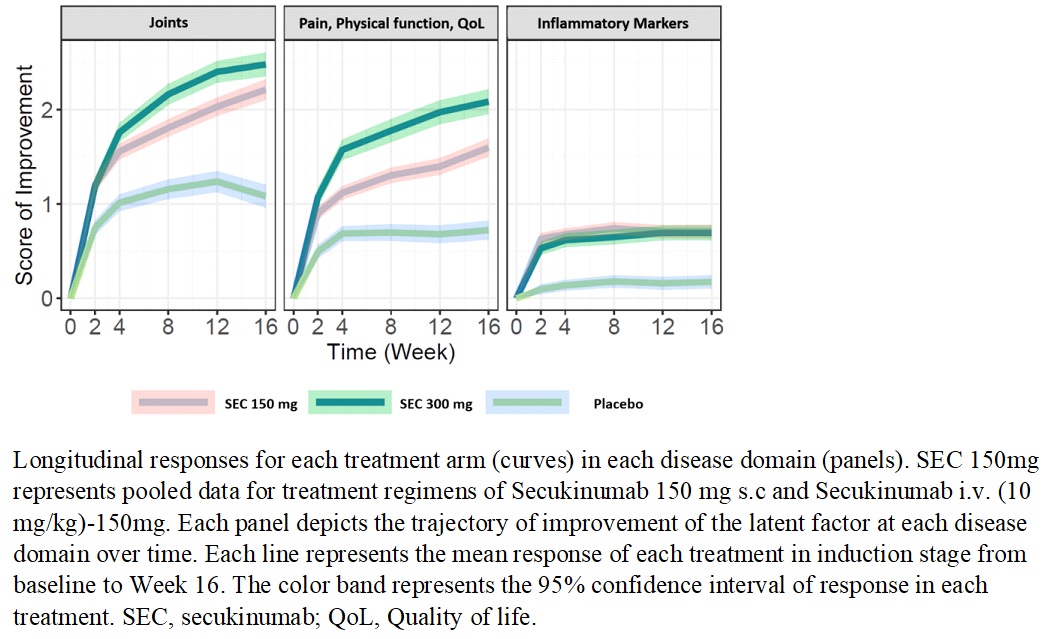Session Information
Date: Monday, November 8, 2021
Session Type: Poster Session C
Session Time: 8:30AM-10:30AM
Background/Purpose: Secukinumab is a fully monoclonal antibody approved for the treatment of several related autoinflammatory diseases, including psoriasis, psoriatic arthritis (PsA) and ankylosing spondylitis.1 While a single clinical endpoint may be chosen to evaluate treatment effect, the natural extension of this sets out to capture a clinical trial’s entire longitudinal response profile, made up of multifaceted signs and symptoms. The objective of this analysis is to characterize disease progression and treatment response to secukinumab, across a wide range of clinical variables, thereby complementing traditional analyses of standard endpoints in PsA and rheumatoid arthritis (RA).
Methods: A novel longitudinal latent factor approach was developed and applied across PsA and RA indications. The method identifies underlying (latent) factors that quantify the contribution of each clinical variable to the major sources (axes) of variation in patient response.2 More importantly, it bundles several clinical endpoints into a small number of concise clinical domains that jointly characterize disease progression. Data from three Phase II RA studies, three Phase III RA studies, and six Phase III PsA studies were pooled, yielding a dataset of 4906 patients; 3464 treated with secukinumab and 1442 treated with placebo. Twelve efficacy endpoints were analyzed up to Week 16 including joint stiffness or swelling, pain, patient-reported outcomes, and alterations in inflammatory markers and quality of life.
Results: The method summarized the 12 efficacy endpoints in three succinct disease domains, each with a distinct clinical interpretation and role in a multi-dimensional remission 3,4 concept (Figure 1). The first disease domain focuses on joint-related symptoms; the second on pain, patient’s disease global assessment, and quality of life; and the third on inflammatory laboratory markers. Together, these three disease domains explain three quarters of the variability in the data across both diseases. Figure 2 displays the trajectory of these latent factors over time. All three disease domains show a numerical separation and greater effect over placebo, with the third separating from placebo as early as Week 4.
Conclusion: The longitudinal latent factor method provided insights into key clinical variables that impact on underlying disease progression and led to better characterization of treatment response. This application has the potential to enhance our understanding of existing composite endpoint methods, as well as to catalyze the development of novel and more robust clinical endpoints.
References:
- Deodhar A, et al. Arthritis Res Ther. 2019;21(1):111.
- Bishop CM. Pattern Recognition and Machine Learning, Chapter 12. New York: Springer, 2006.
- Coates LC, et al. Rheumatology. 2018; 57(8):1321–31.
- Gul HL, et al. Rheumatology.2020; 59(3):613–21.
 Heatmap illustrating the relative weights of measurements in disease domains
Heatmap illustrating the relative weights of measurements in disease domains
 Score of response in disease domain stratified by treatment
Score of response in disease domain stratified by treatment
To cite this abstract in AMA style:
Zhu X, Falck F, Ghalebikesabi S, Kormaksson M, Vandemeulebroecke M, Zhang C, Santos L, Hei Kwok C, West D, Mallon A, Martin R, Readie A, Gandhi K, Ligozio G, Nicholson G. Identification of Underlying Disease Domains by Longitudinal Latent Factor Analysis for Secukinumab Treated Patients in Psoriatic Arthritis and Rheumatoid Arthritis Trials [abstract]. Arthritis Rheumatol. 2021; 73 (suppl 9). https://acrabstracts.org/abstract/identification-of-underlying-disease-domains-by-longitudinal-latent-factor-analysis-for-secukinumab-treated-patients-in-psoriatic-arthritis-and-rheumatoid-arthritis-trials/. Accessed .« Back to ACR Convergence 2021
ACR Meeting Abstracts - https://acrabstracts.org/abstract/identification-of-underlying-disease-domains-by-longitudinal-latent-factor-analysis-for-secukinumab-treated-patients-in-psoriatic-arthritis-and-rheumatoid-arthritis-trials/
